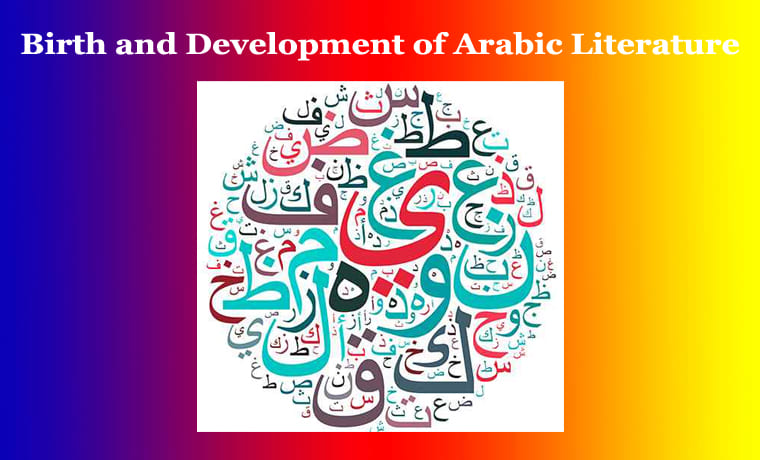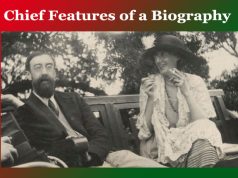Birth and Development of Arabic Literature
Birth and Development of Arabic Literature
Birth and Development of Arabic Literature
Introduction:
Arabic literature stands as a rich and diverse tapestry woven over centuries, reflecting the cultural, historical, and linguistic evolution of the Arab world. Its roots can be traced back to the pre-Islamic era, and its development has been shaped by a myriad of influences, including religious, political, and social factors. This article will explore the birth and evolution of Arabic literature, examining key periods, genres, and influential figures that have contributed to its flourishing heritage. Birth and Development of Arabic Literature
Pre-Islamic Poetry and Orality (6th to 7th Century CE):
The origins of Arabic literature can be found in the oral tradition of pre-Islamic poetry. The Arabs were renowned for their poetic prowess, and their poetry served as a form of entertainment, cultural expression, and historical documentation.
Legendary poets such as Imru’ al-Qais and Antarah ibn Shaddad gained prominence during this period, creating verses that celebrated tribal valor, love, and nature. Birth and Development of Arabic Literature
Islamic Golden Age (8th to 14th Century CE):
With the advent of Islam in the 7th century, Arabic literature experienced a significant transformation. The Quran itself is considered a literary masterpiece and played a pivotal role in shaping the Arabic language.
The Islamic Golden Age witnessed a flourishing of literature in various forms, including poetry, prose, and scientific writings. Scholars like Al-Mutanabbi and Al-Ma’arri emerged during this period, contributing to both secular and religious literature. Birth and Development of Arabic Literature
Courtly Literature and the Abbasid Era (8th to 13th Century CE):
The Abbasid Caliphate, known for its cultural and intellectual advancements, saw the rise of courtly literature. The “One Thousand and One Nights” (Arabian Nights) is a notable example of the narrative tradition during this era.
Philosophical works, such as those by Al-Farabi and Ibn Sina, added depth to Arabic literature, integrating Greek philosophical ideas with Islamic thought.
Andalusian Renaissance (9th to 15th Century CE):
Islamic Spain, or Al-Andalus, became a beacon of intellectual and artistic achievement. Poets like Ibn Hazm and philosophers like Ibn Rushd (Averroes) thrived, creating a unique blend of Arabic, Hebrew, and Latin literature.
This period witnessed a flowering of poetry, including the muwashshah and zajal, and the translation movement that brought classical Greek and Roman works into Arabic. Birth and Development of Arabic Literature
Mystical Literature and Sufism (9th Century CE Onward):
Sufism, the mystical dimension of Islam, played a crucial role in shaping Arabic literature. Sufi poets such as Rumi and Ibn Arabi expressed spiritual insights through their poetry.
The allegorical and symbolic nature of Sufi literature added a mystical dimension to Arabic poetry and prose, exploring the inner dimensions of faith and human experience. Birth and Development of Arabic Literature
Modern Arabic Literature (19th Century CE Onward):
The 19th century marked the beginning of the modern era in Arabic literature. Western literary forms and ideas began to influence Arabic writers, leading to the emergence of the Nahda (Arab Renaissance) movement.
Pioneering figures like Taha Hussein and Khalil Gibran contributed to the modernization of Arabic literature, addressing social, political, and cultural issues. Birth and Development of Arabic Literature
Conclusion:
Arabic literature’s journey from its pre-Islamic origins to the modern era reflects the dynamic interplay of cultural, religious, and intellectual forces. It has evolved into a multifaceted expression of the Arab world’s identity, encompassing a diverse range of genres and styles. As Arabic literature continues to adapt and respond to contemporary challenges, it remains a vital and vibrant part of the global literary landscape. 0 0 0. Birth and Development of Arabic Literature
Birth and Development of Arabic Literature
Essays on Arabic Language and Literature
- Source of Early Arabic Literature: The Qur’an
- Source of Early Arabic Literature: Hadith
- Development of Arabic Poetry During the Early Islamic Period
- Characteristics of Arabic Poetry of the Early Islamic Period
- Characteristics of Arabic Prose of the Early Islamic Period
- Arabic Prose Literature in the Early Islamic Period
- Importance of Arbic Language and Literature
- Position of Arabic Language In the Present-Day World
- Birth and Development of Arabic Prose
- Birth Development and Characteristics of Arabic Poetry
Essays on Prominent Arabic Poets and Their Poetic Career







